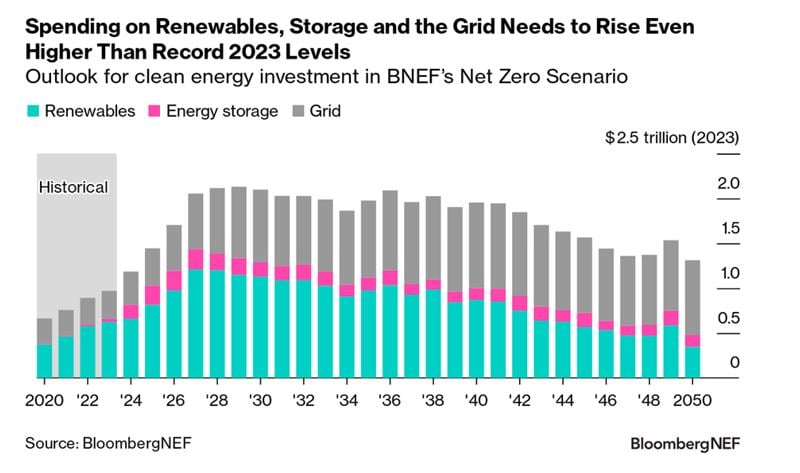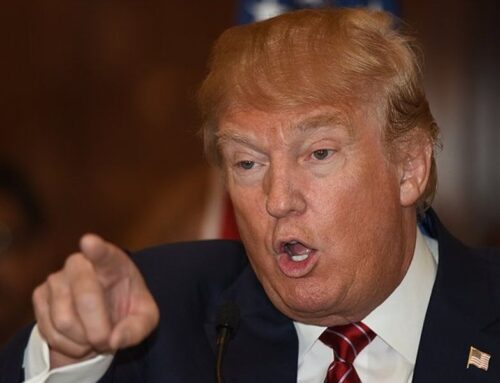BNEF: World not on track to treble renewables target by 2030
September 26, 2024
An increased investment in renewable energy, energy storage and grids are key requirements if the world is to reach the tripling target. More support for emerging markets and developing economies are also key parts of the plan to reach 11TW of renewables by 2030.
Another recent report from BNEF estimated that this year’s solar PV additions would reach 592GW, and its latest warning comes in spite of both the a fast pace of renewable power capacity additions—last year the world added 447GW of solar PV capacity—and the rapidly falling costs of solar PV and batteries.
BNEF estimates that yearly investments need to increase to US$1 trillion (in 2023 dollars) between 2024 and 2030. This is a nearly US$400 billion increase from the number reported in 2023, when the world invested a record US$623 billion.

“The target of tripling renewable energy capacity to be on a net-zero pathway to 2050 is still achievable,” said Meredith Annex, co-lead author of the report. “However, governments need to remove barriers to renewable energy expansion and support the financing of clean energy projects, especially in developing countries. Building out power grids is particularly vital.”
On top of that, a yearly average of US$193 billion needs to be invested in battery storage and US$607 billion in grids. Lack of grid capacity, or grid congestion, have been ongoing issues globally in the past few months, as frequent readers of PV Tech would know. A report from consultancy firm DNV estimated that the global grid capacity needs to increase by 2.5 times its current size by 2050, with annual investments on grids to nearly reach US$1 trillion.
Solar leads renewables investment in 2024
Reaching the US$1 trillion per year target is feasible, estimates BNEF, due to the lowered cost of renewable energy over the past decade, as shown by a report from IRENA earlier this week. The levelised cost of electricity (LCOE) for utility-scale solar PV plants decreased by 12% between 2022 and 2023, to US$0.044/kWh.
Furthermore, in the first half of 2024, BNEF estimates US$312 billion was invested in renewables, the bulk of it in solar PV. Large-scale and small-scale solar PV projects received US$221 billion in investment in H1 2024. Due to the low costs of solar PV, the technology is expected to make up the majority of the trebling renewable energy targets by 2030.
As is the case for solar PV additions, China has been the largest market for renewable energy investment in H1 2024, with US$130 billion. Along with Brazil, China is on track to meet its targeted contribution to the global target of 11TW. Despite strong policy support, Europe, the US and India need to accelerate their efforts, according to the report.
Japan, Indonesia, Turkey, the Middle East and North Africa (MENA) region and sub-Saharan Africa are well behind the required volumes of renewables deployment and investment.
Search
RECENT PRESS RELEASES
Related Post




